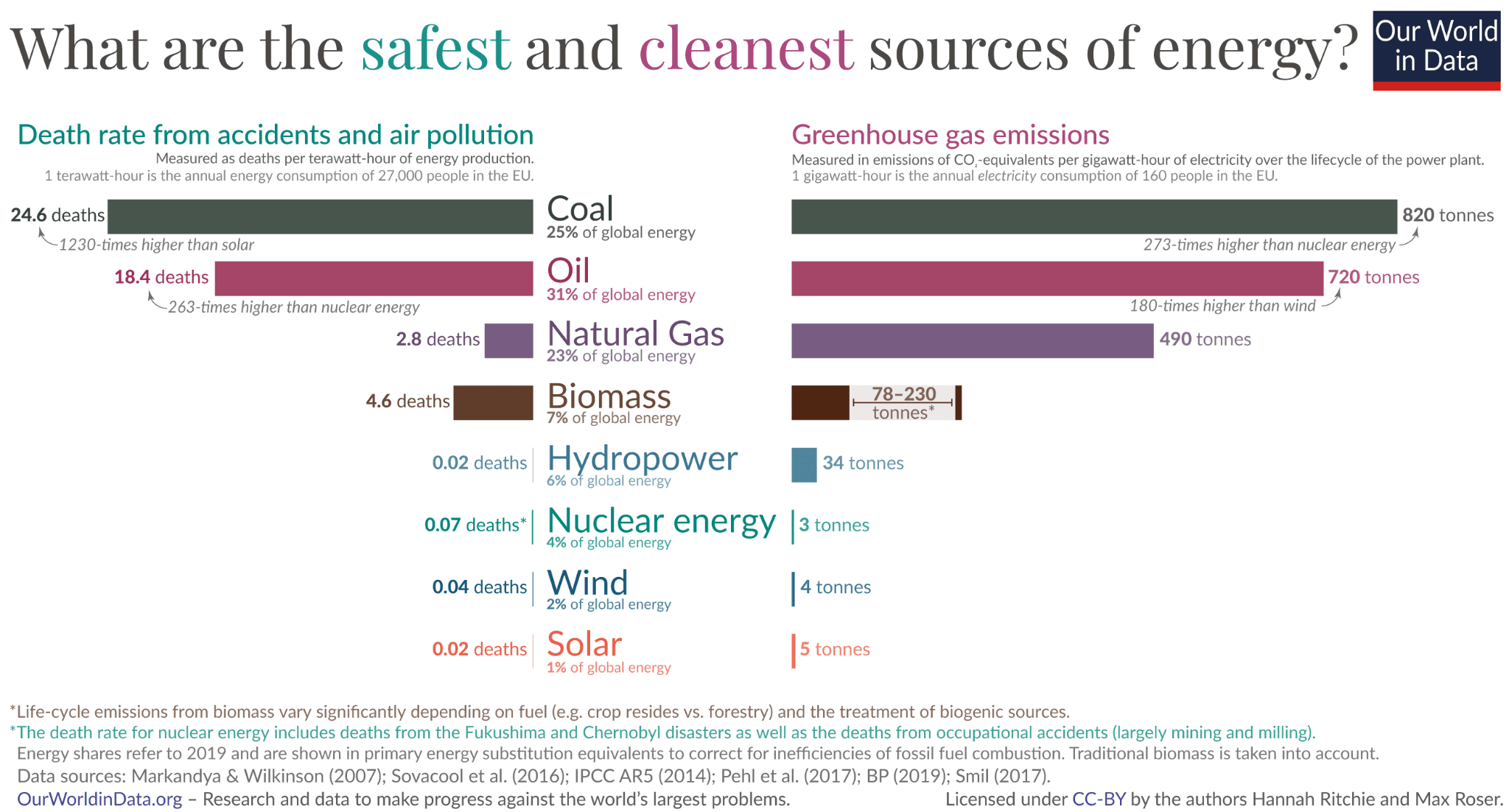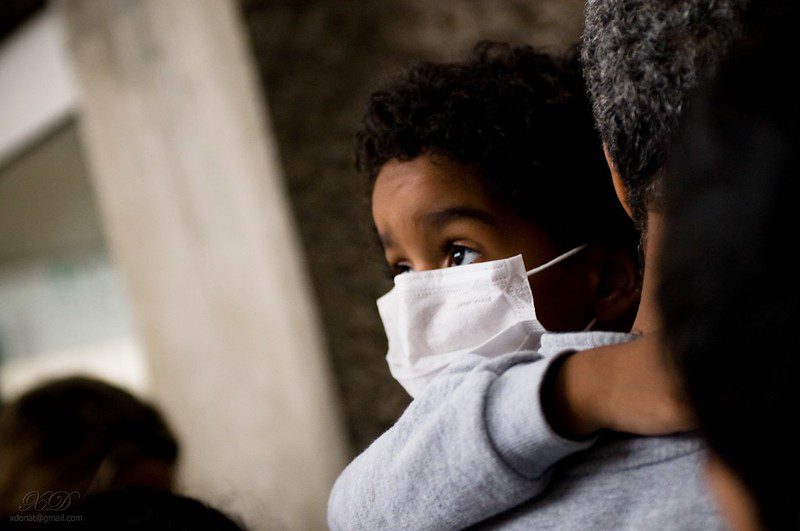Environmental scientists have a significant role to play in shaping our future. As global climate change and environmental degradation accelerate, expert knowledge on environmental topics becomes even more important. A handful of overarching issues represent some of the most pressing matters for these leaders to address, and their research and expertise is critical in influencing healthy interactions between humans and the world around them.
In the post that follows, we lay out the top three environmental issues facing the next generation of scientific leaders, as well as the consequences for failing to deal with these challenges.

1. Reducing Inequity and Systemic Oppression
Inequity shows up in major ways within environmentalism, particularly with regard to pollution. Young leaders in the field are tackling this issue head on by merging activism with science and centering the experiences and needs of populations who are most vulnerable.
Pollution and disproportionate harm within Black and Latino communities
In the past, redlining policies labeled neighborhoods as hazardous based on the percentage of Black and immigrant residents. Although U.S. redlining policies ended over half a century ago, they are still linked to disproportionate levels of air pollution within Black and Latino communities today. Today, those communities experience highway pollution that contributes to 56% more nitrogen dioxide in the air. This type of pollution is linked to asthma, respiratory infections, and lung disease, and creates significant health disparities between communities within the same cities.
Further north, Indigenous activists in Canada frequently protest and defend ancestral lands against pipeline construction. This construction contaminates the surrounding ecosystem and causes significant damage to human health, often through water pollution. In the wake of recent protests over construction on Wet’suwet’en lands, fossil fuel companies ran ad campaigns portraying oil and gas development as necessary for Indigenous populations to thrive. They framed the construction as necessary for economic prosperity of the people who would in fact be most hurt by the damage to the environment. The ads resonated with some Indigenous leaders who view pipeline jobs as pathways out of poverty, but Wet’suwet’en hereditary chiefs largely disagree and continue to prioritize protecting the land.
Moving towards solutions by diversifying STEM fields
Green STEM fields, which include conservation, environment, and climate-related sciences, are disproportionately white even in comparison to other sciences. When considering who’s doing the research and whose needs are being addressed, communities that are most vulnerable should be front and center. Because non-white populations are disproportionately targeted by environmental harm, it’s important to increase access and opportunity within these fields. Addressing inequity can very well begin with scientists themselves.
The work of young leaders who are combining environmental science with organizing and activism is important for progress. These activists are exploring topics such as the colonial roots of the climate crisis and investigating how to dismantle systems of oppression within of environmentalism. They understand that equity is always relevant in environmental science and that if it’s not being addressed, disproportionate harm is being reinforced.

2. Large Scale Transformations and Innovative Solutions Towards Sustainability
The world is at a turning point for enacting change when it comes to taking on significant environmental threats such as biodiversity loss and climate change. Just as these threats have become large and complex, the solutions should be just as tremendous. The path forward calls for both large scale changes and creative innovation.
Moving Towards Clean Energy
Technological advances have helped make renewable energy more affordable and practical than it was in the past. Between 2009 and 2019, the price of solar electricity decreased by 89%. As we move the world away from fossil fuels and towards net-zero carbon emissions, the price of renewables like wind and solar energy will continue to decrease. And as the renewable industry expands, technology will continue to improve. Innovations such as batteries that store electric power when the supply of sun and wind is low can help bring about lasting change.
Biodiversity and Artificial Intelligence
The world’s biodiversity crisis presents another opportunity for innovative technology to drive change. Scientists have been using artificial intelligence to increase their knowledge of the variety of species that exist. Along with citizen science and even gaming software, artificial intelligence is helping to establish non-invasive ways of tracking wildlife and to educate and engage the public on conservation efforts.
However, it is important to consider the risks when employing new technology. While creative innovations can help strengthen biodiversity, they can also increase environmental harm through resource extraction. The next generation of environmental scientists will have to navigate these issues responsibly.
3. Understanding and Utilizing Interconnections
Environmental science is an interdisciplinary field that combines knowledge from ecology, geology, meteorology, biology, chemistry, engineering, and physics. This foundation of interconnectedness is significant as scientists investigate problems and solutions that are similarly intertwined.

Interconnectedness in a Global Crisis
The COVID-19 pandemic has clearly shown how different kinds of environmental and societal issues intersect. In the face of this global health crisis, supply chain issues disrupted the food system and threatened society’s move towards clean energy. Wildlife conservation efforts were delayed as the pandemic response took priority, and those already at risk from air pollution were more vulnerable to the virus itself.
In many ways, this crisis replicates the challenges scientists face when managing different threats to environmental health. When issues are far reaching and multilayered, it is best to move towards preventative actions rather than scrambling to organize a disaster response.
Furthermore, it’s necessary to draw from diverse sources of knowledge to construct the most effective solutions. This may show up as looking towards traditional ecological knowledge, or merging different Indigenous knowledge systems with the scientific method. It could mean forming links across topic areas. Nowadays we’re seeing curious minds investigate matters such as the connection between climate change and mental health or the link between increased sleep and lower greenhouse gas emissions. Focusing on connections can help open up possibilities for solutions.
When considering the interaction between humans and the planet we inhabit, there are a variety of complex topics that need urgent action. The next generation of environmental scientists can lead the way towards a healthier future by approaching broad issue areas with creativity, determination, and thoughtfulness.
Image credits: Smog (412-DA-2980 by Dystopos is licensed under CC BY-NC 2.0); Graph (What are the cleanest sources of energy? by OurWorldInData is licensed under CC BY) ; Masked child (Dans l’air du temps (d’actualité) by Xavier Donat is licensed under CC BY-NC-ND 2.0)


